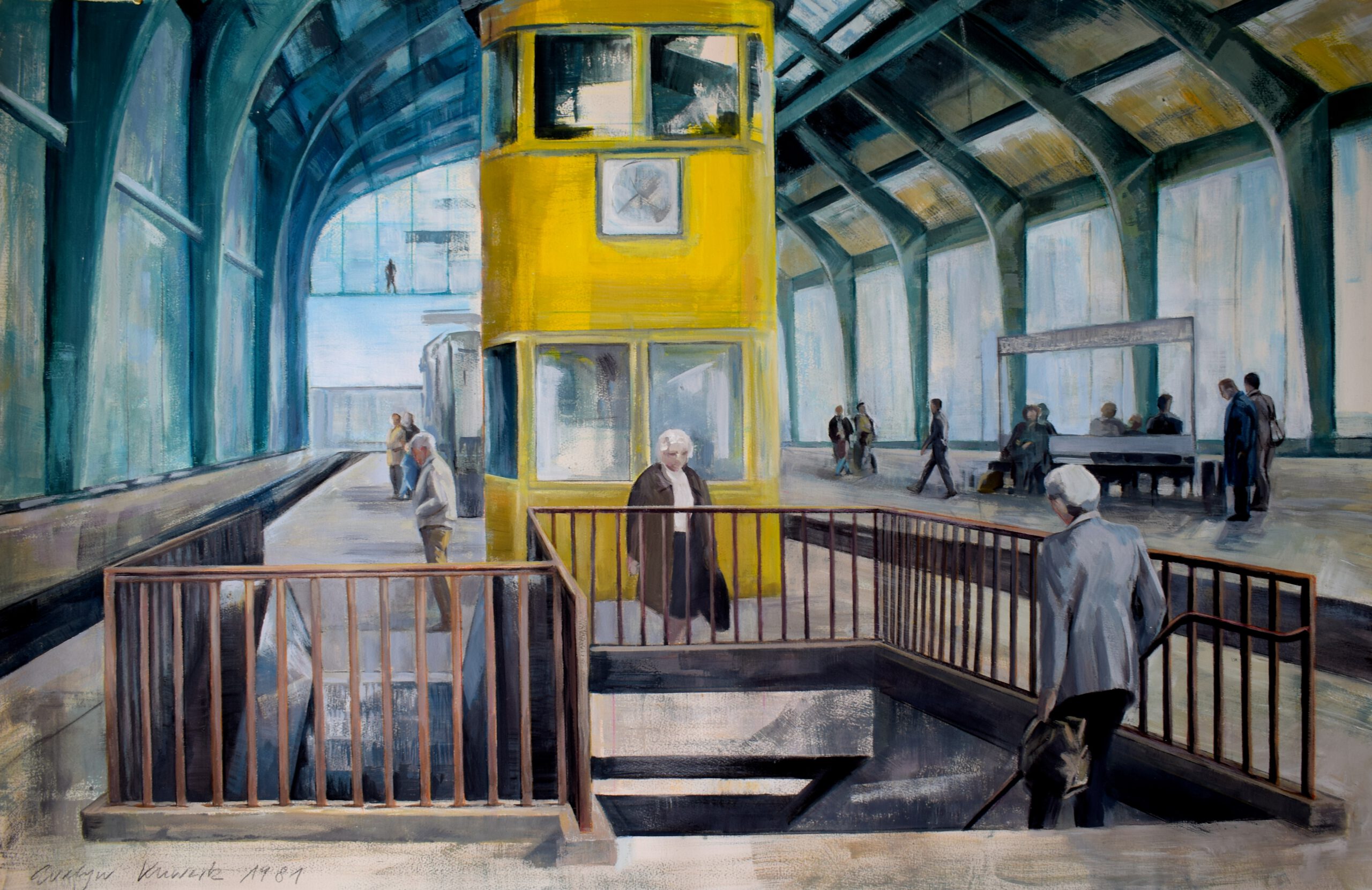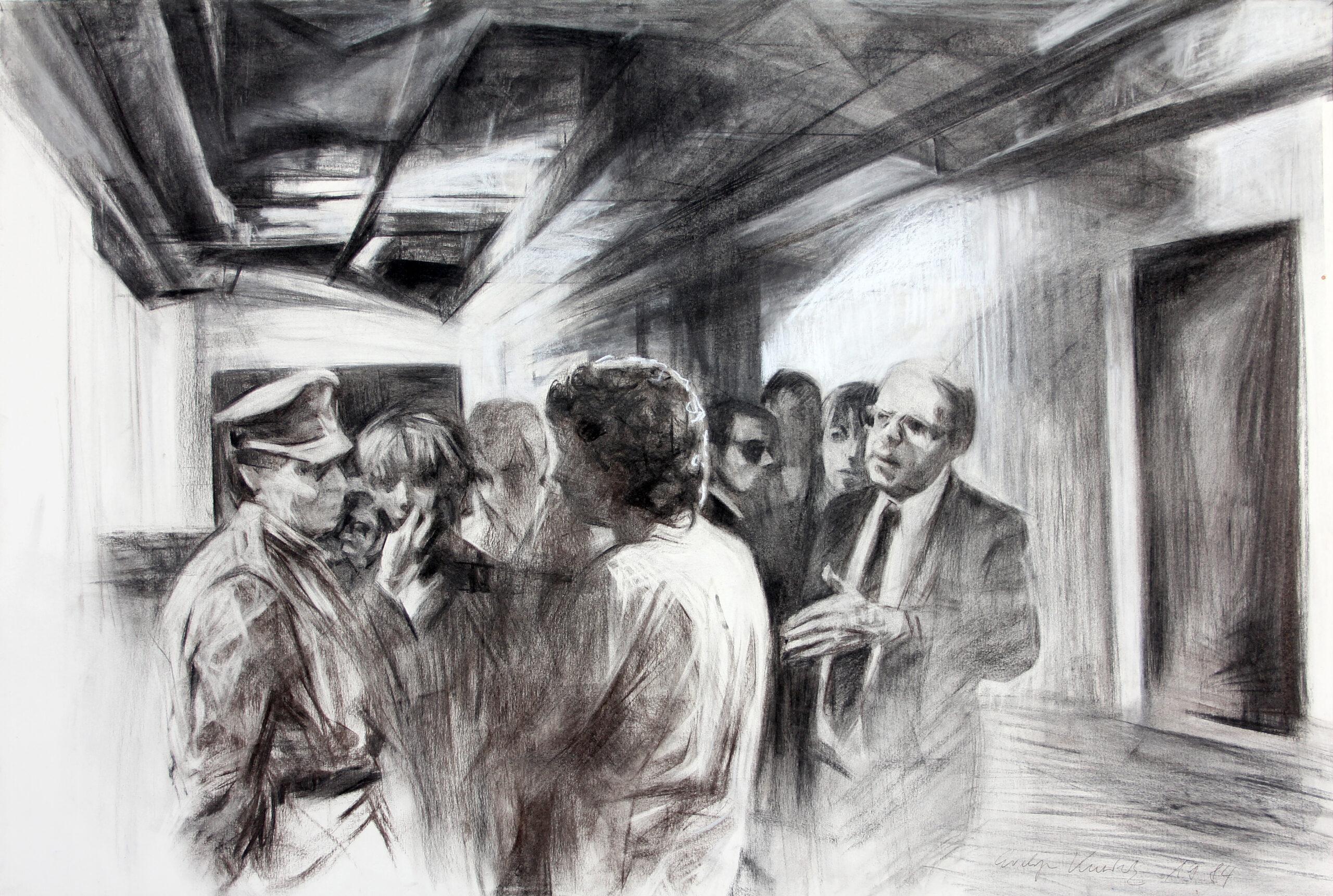Berlin Wall Time 1979-1989
In 1979 the city of WEST BERLIN became an ongoing theme: she discovered the U-Bahn (underground railway) and the S-Bahn (urban railway) as characteristic big-city motifs in which the attitude towards life of Berlin residents could be expressed, and which rendered visible the special political situation of the city. She represented urban life of the 1980s by means of the interchange stations of Hallesches Tor, Kottbusser Tor and Gleisdreieck, showing people waiting or hurrying up or down stairs. The light accentuated both the space and also the people who merged with this space. She also painted anonymous, approaching groups of people in a portrait-like manner, as they travelled by U-Bahn or stood on escalators. In the S-Bahn stations of Schöneberg and Friedrichstraße she took a different approach. Here the people become increasingly ghostlike, more impersonal, until they almost disappear out of focus. The partition of the city was particularly tangible at these locations. On the one hand this was a metaphorical visual language, on the other hand also a realistic view of the twilight state in which the S-Bahn system, owned by the German Democratic Republic, found itself at that time: little used and neglected following the construction of the Wall and the call for a boycott which followed on from this. A decayed world.










